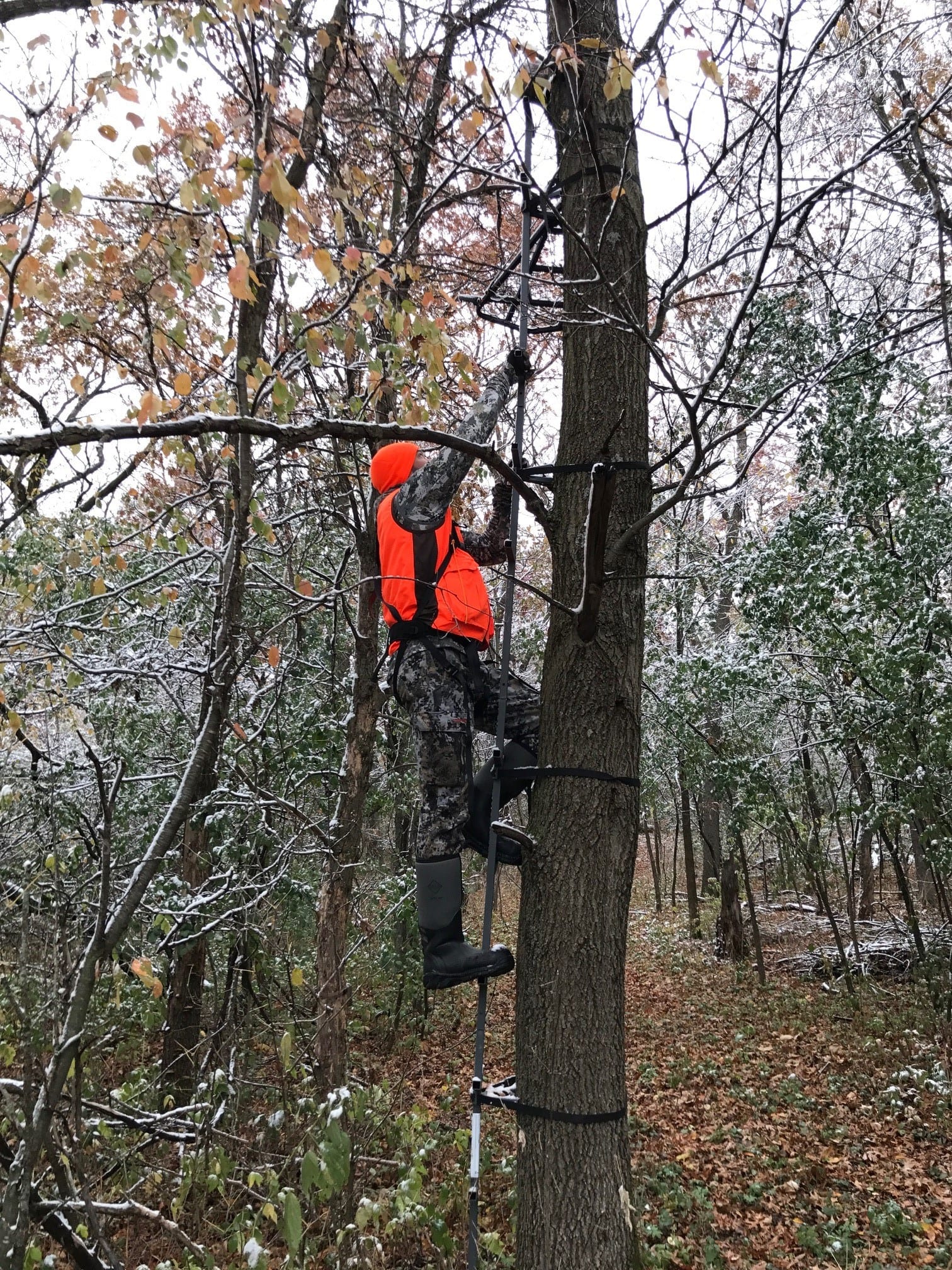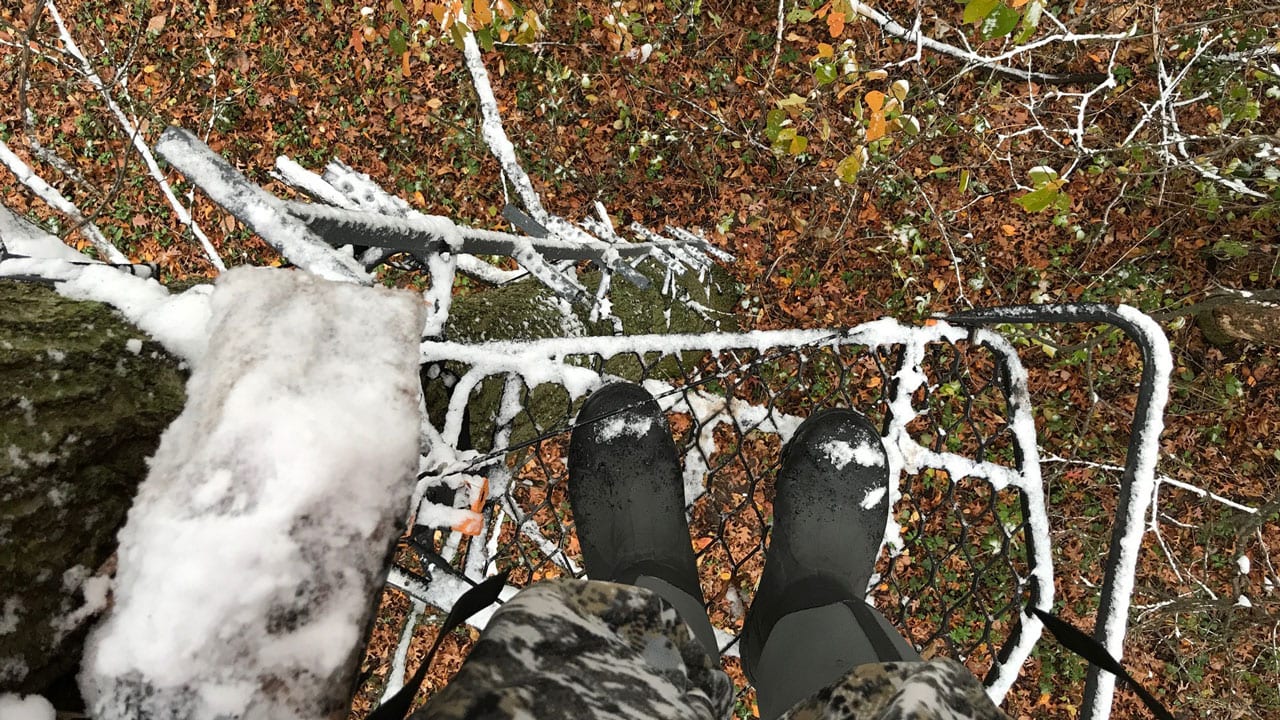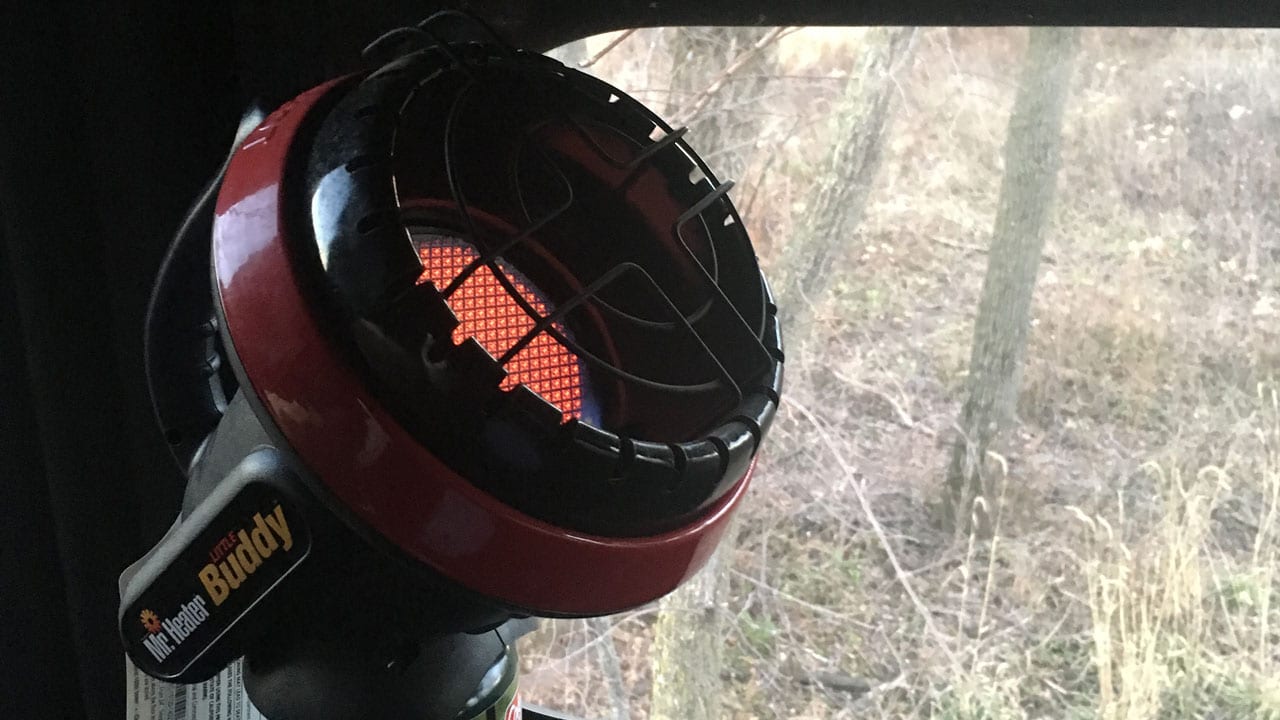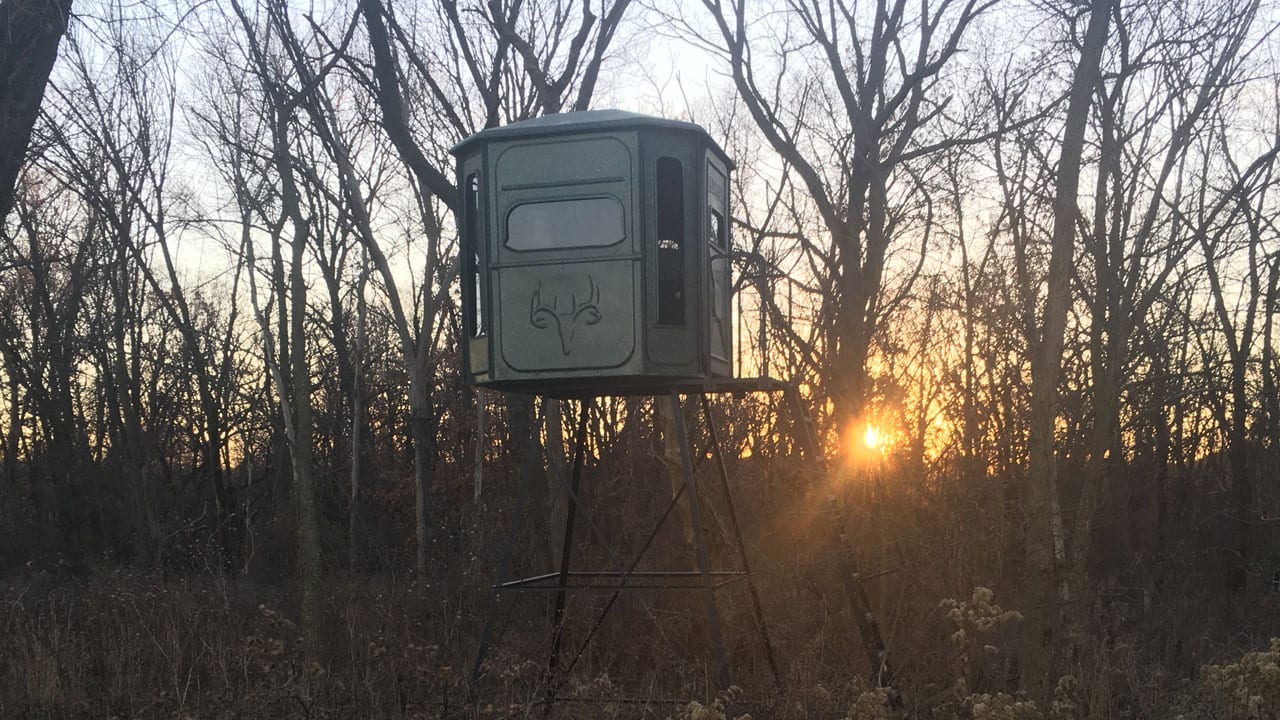It seems like just yesterday, I was anxiously anticipating opening day of the 2017 archery season. For some reason, this season seemed to progress extremely fast. The month of December is here and in my pocket, are multiple archery tags longing to be wrapped around a whitetail yet this year. As I gather my cold weather gear, some of the unique aspects of late season bowhunting are on my mind. If you are still holding on to that archery tag, you might be faced with some of these same issues.
Treestand Safety

Climbing tree steps presents a challenge when snow and ice are involved.
Treestand safety is always a concern but with the colder temperatures paired with snow and ice, tree stand hunting can be downright dangerous. Regardless of the time of year, you should always wear a safety harness when hunting from an elevated treestand. With all the safety harness options out there today, there is bound to be one that fits your hunting style and preference. It’s very important to remember to be locked in from the ground to the platform. The majority of treestand falls occur when climbing up or descending from the stand. Utilizing a lifeline each time you climb can literally save your life. If you are unfamiliar with a lifeline, it’s a simple device that you install at the treestand when you hang it. At the ground, you clamp onto the lifeline just like you would the tree. As you climb, you slide the loop up with you. In the event of a fall, your harness acts in the same fashion as in the tree, but instead of the tree holding you, the life line is. If installed properly, the lifeline should run parallel to your climbing steps or sticks. Paired together, a quality safety harness and lifeline, will keep you safe and get you home to your family and friends after every hunt.
The weather during late season can provide its own challenges to hunting from elevated treestands. Extra precaution must be taken when climbing steps or ladders during this time of year. Ice can build up on your steps making the climb more dangerous. Make sure to check your steps before you decide to climb. Brush off any snow and try to remove any ice if possible. Wearing boots with thick soles and aggressive tread can help navigate the treacherous climb. Once near the platform, try and brush off all the snow and ice. Treestand platforms can be slippery without the added frozen moisture. Plus, getting the snow and ice off should aid in a quieter sit. I am guilty of not removing my treestand seats after each hunt. If you can remember to pull the seat off and throw it in your pack, it makes for a much more comfortable sit the next time out. No worries of your seat being wet or full of snow and ice. This exact situation has already happened to me on a hunt this season. Mother nature granted us with an early October snowfall which left my tree stand seat full of snow and ice. After sitting on the seat for a couple of hours, it gets nice and wet. Not the way you want your morning hunt to go.

The author neglected to remove his tree stand seat and was presented with a snow and ice covered seat on a recent hunt.
Carbon Monoxide Poisoning
A more serious concern that is becoming more of a factor is carbon monoxide poisoning. When the temperatures dip into sub-freezing levels, sitting in a ground blind or fully enclosed elevated blind is much more comfortable than the traditional treestand. A hub-style ground blind creates an effective shelter from the elements and can be placed pretty much anywhere. This style of blind typically has openings to view and shoot out of that can be opened or closed as needed. Adding a propane portable heater to this hunting setup, provides additional comfort to keep you on stand as long as possible.
With the hub-style blinds out there today, venting the carbon monoxide from the heater shouldn’t be an issue. Just make sure you have one of the large viewing windows open and if possible, a small opening on either side of you. This will allow cross ventilation to draw that carbon monoxide out of the blind. These blinds also usually have a small vent in the ceiling portion of the blind that can be opened. The problem with this style vent during this time of year is you are trying to keep as much heat in the blind as possible and providing an opening at the ceiling level of the blind, will not only release any carbon monoxide, but will also release a lot of your heat. If you can provide cross ventilation, that should create enough draw to pull that dangerous gas out of your blind and still allow you to stay warm.

Make sure you have proper ventilation when using a portable propane heater.
You don’t have to search very hard to find numerous options of enclosed elevated hunting blinds on the market today. They come in all sorts of shapes, colors, and sizes. Elevated platforms range from steel, to wood, to aluminum. The options are endless. Regardless of the supporting platform, the same safety concerns apply. Consider the stairs and platform when thinking about safety. The same way tree steps and treestands can build up with snow and ice, so can the platforms and access stairs to them. As most hunters who use these types of blinds do not wear safety harnesses, try to use extra caution when climbing up and down the elevated platforms. Some of the more expensive options employ a handrail on their stairs. I can see this being an added incentive when using this type of blind during the late season. If a handrail is not an option, try to always use the three-point climbing system. Always maintain three points of contact between your two hands and two feet on the ladder or steps you are climbing. This should allow you to safely ascend and descend even during inclement weather.

Hunting out of an enclosed elevated blind can provide warmth and comfort during the late season.
Regardless of which type of enclosed elevated blind you hunt from, they are all very well constructed and are typically sealed tight. Early season, this is less of an issue as you will most likely have windows open to allow as much air inside for cooling purposes as possible. When you are using this hunting method to try and stay warm, the windows stay shut until a shot opportunity presents itself and the ventilation is minimal or non-existent. Every year I read about fatalities that happen in ice fishing houses from carbon monoxide poisoning. It almost always comes back to the lack of exhaust or ventilation. If you are going to hunt in an elevated enclosed blind with a portable propane heater, make sure you crack a window for ventilation. Yes, you will lose a little of your heat, but more importantly, you will stay alert and avoid any poisoning that could result from over exposure to carbon monoxide. It may sound silly, but it continues to happen to ice fishermen year after year. Don’t let it happen to you in the ground blind.
Conclusion
Late season bow hunting in the upper Midwest presents many different challenges. One of those challenges is making sure you are staying safe. From climbing into treestands to sitting in insulated, enclosed blinds, they all present their own safety challenges. Make sure to take the extra precautions to hunt safely this time of year. The goal is always to try and harvest the animal we are after, but the ultimate goal is to return home safely after each hunt.
Good luck and stay safe!

 By
By 



